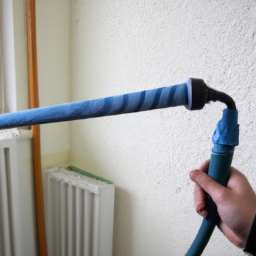Flushing a Radiator Using a Garden Hose
How To Flush A Radiator With A Garden Hose
How To Flush A Radiator With A Garden Hose
Radiators are core components of any internal combustion engine. Their primary responsibility is to cool and regulate the temperature of the engine. Over time, dirt, rust, and other cooling system contaminants can accumulate in the radiator and clog it. Flushing a radiator with a garden hose can help extend its life and maintain its efficiency.
Prepare The Radiator
The first step in flushing a radiator is to prepare the radiator for cleaning. Start by parking the car in a safe, level spot and allowing the engine to cool down. Once cooled, put on safety glasses and gloves for eye and hand protection. Then, locate and loosen the radiator cap and locate the radiator drain valve at the bottom.
Place The Drain Bucket
The next step is to locate a drain bucket that is large enough to hold all the liquid from the radiator. Place the drain bucket underneath the radiator drain valve. With the drain bucket in place, use a wrench to loosen and remove the radiator drain valve. The radiator fluid, which may be hot, will start draining into the bucket.
Connect The Garden Hose
Once all the radiator fluid has drained, replace the drain valve and firmly tighten it. Now, locate a garden hose and securely attach it to a spigot. Connect the other end of the garden hose to the radiator fill cap and turn on the spigot. Allow the water to run for about five minutes. This will help to flush away dirt and contaminants that may be clogging the radiator.
Replacing The Radiator Fluid
Once the radiator has been flushed, the next step is to replace the radiator fluid. This is a crucial part of the flushing process and should never be overlooked. Purchase the appropriate radiator fluid for your car and pour it into the radiator with the help of a funnel. Make sure the level of the radiator fluid is within the suggested range.
Finish Up
Finally, turn off the spigot, disconnect the garden hose from the radiator fill cap, and remove the radiator cap. Check the radiator and make sure it is clean before refilling the radiator with the appropriate radiator fluid. At this point, you should have a fully functioning radiator that is free of dirt and debris.
In Summary
Flushing a radiator with a garden hose is an effective way to get rid of dirt and contaminants that can accumulate in the radiator and reduce its efficiency. This process involves loosening the radiator cap, placing a drain bucket underneath the radiator drain valve, connecting the garden hose and flushing away the contaminants, replacing the radiator fluid and checking the radiator for cleanliness. With the right tools and a bit of knowledge, anyone can flush their radiator in a quick and efficient manner.

Previous Page
Next Page
